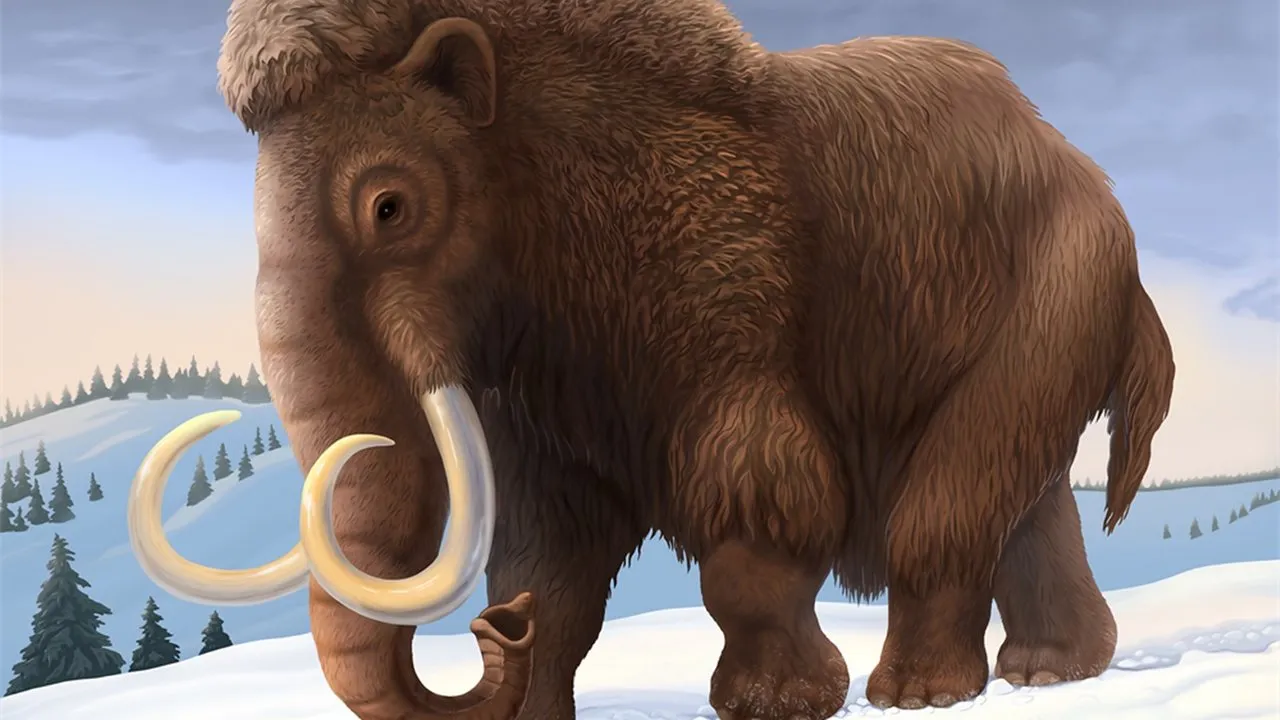Woolly Mammoths were ancestors of the modern elephant. They evolved from the genus Mammuthus which first evolved in Africa. These huge, shaggy beasts went extinct more than 10,000 years ago, along with their distant cousins the mastodons. The image of the woolly mammoth was painted on the walls of prehistoric people, and have become part of our popular culture.
When John Bell sailed down the Ob River In 1722, he mentioned that mammoth tusks were well known in the area. According to him, the local people called "mammon's horn" and were often found in washed-out river banks. There were even legends of living mammoth which came out at night and always disappeared underwater when detected.
Several mammoths have been found frozen in the Siberian ice frozen so quickly their flesh could still be eaten today. Furthermore, the stomach contents and unswallowed food (actually caught between the teeth) are that of a mountain meadow, not unlike that of alpine regions today. On the Lyakhovsky Islands, the southernmost group of the New Siberian Islands in the Arctic seas of northeastern Russia, Scientists find a female mammoth with dark blood in ice cavities below the belly of the animal. When researchers broke the cavities with a poll pick, the blood came flowing out which was quite surprising as the temperature was minus 10 degrees Celsius. In 2018 scientists discover the frozen head of an Ice Age wolf - a first of its kind. The severed head is incredibly preserved, thanks to Siberia’s permafrost, and still has fur, fangs, and even its brain. By the end of the last Ice Age, about 10,000 years ago, pretty much all the world's Mammoths had succumbed to climate change and predation by humans. The exception was a small population of Woolly Mammoths that lived on Wrangel Island, off the coast of Siberia, until 1700 B.C. Since they subsisted on extremely limited resources, Wrangel Island Mammoths grew to much smaller sizes than their Woolly Mammoth relatives, and are often referred to as dwarf elephants.
Like their modern relatives, mammoths were quite large. The largest known species reached heights in the region of 4 m at the shoulder and weights of up to 8 tonnes, while exceptionally large males may have exceeded 12 tonnes. However, most species of mammoth were only about as large as a modern Asian elephant (which are about 2.5 m to 3 m high at the shoulder and rarely exceeding 5 tonnes).
For these animals to be frozen as discovered in Siberia temperatures of two hundred degrees below zero are needed to quick-freeze an animal of such large bulk. This points to extraordinary catastrophism which happened in this area and supports the catastrophe theory of Cuvier. There is also a project to clone the Mammoth form the DNA found, but arguments against it are that the environment has changed so that it would not be able to live. An argument which supports the theory of rapid change than a slow change over time.
Sources:
https://en.wikipedia.org/wiki/Mammoth#Description
https://www.icr.org/article/did-frozen-mammoths-die-flood-or-ice-age/
https://www.iflscience.com/plants-and-animals/incredibly-preserved-ice-age-wolf-head-found-in-siberia/
https://www.rt.com/news/mammoth-blood-ice-siberia-908/
https://www.newscientist.com/article/mg21328464-900-siberia-was-a-wildlife-refuge-in-the-last-ice-age/
